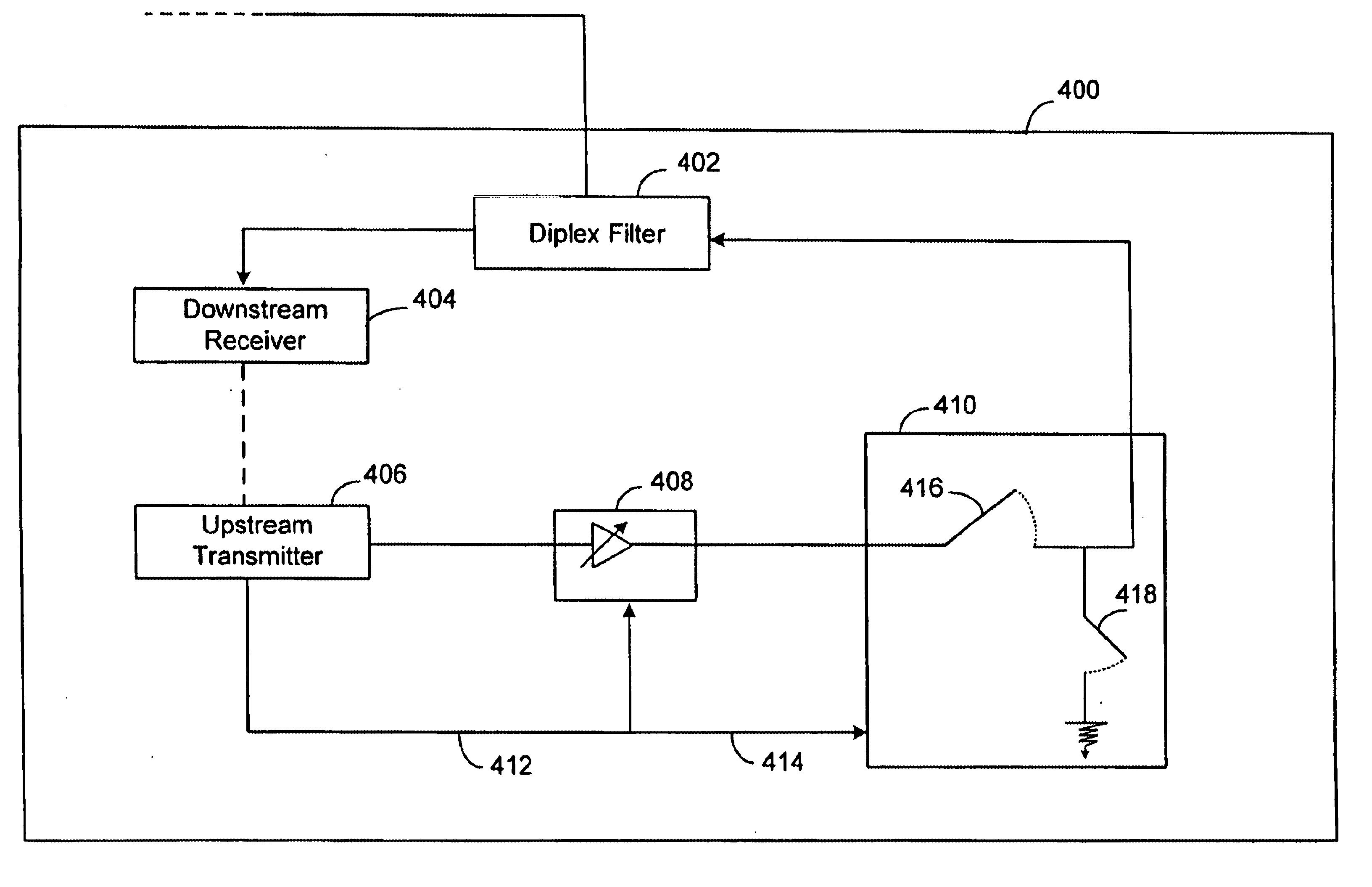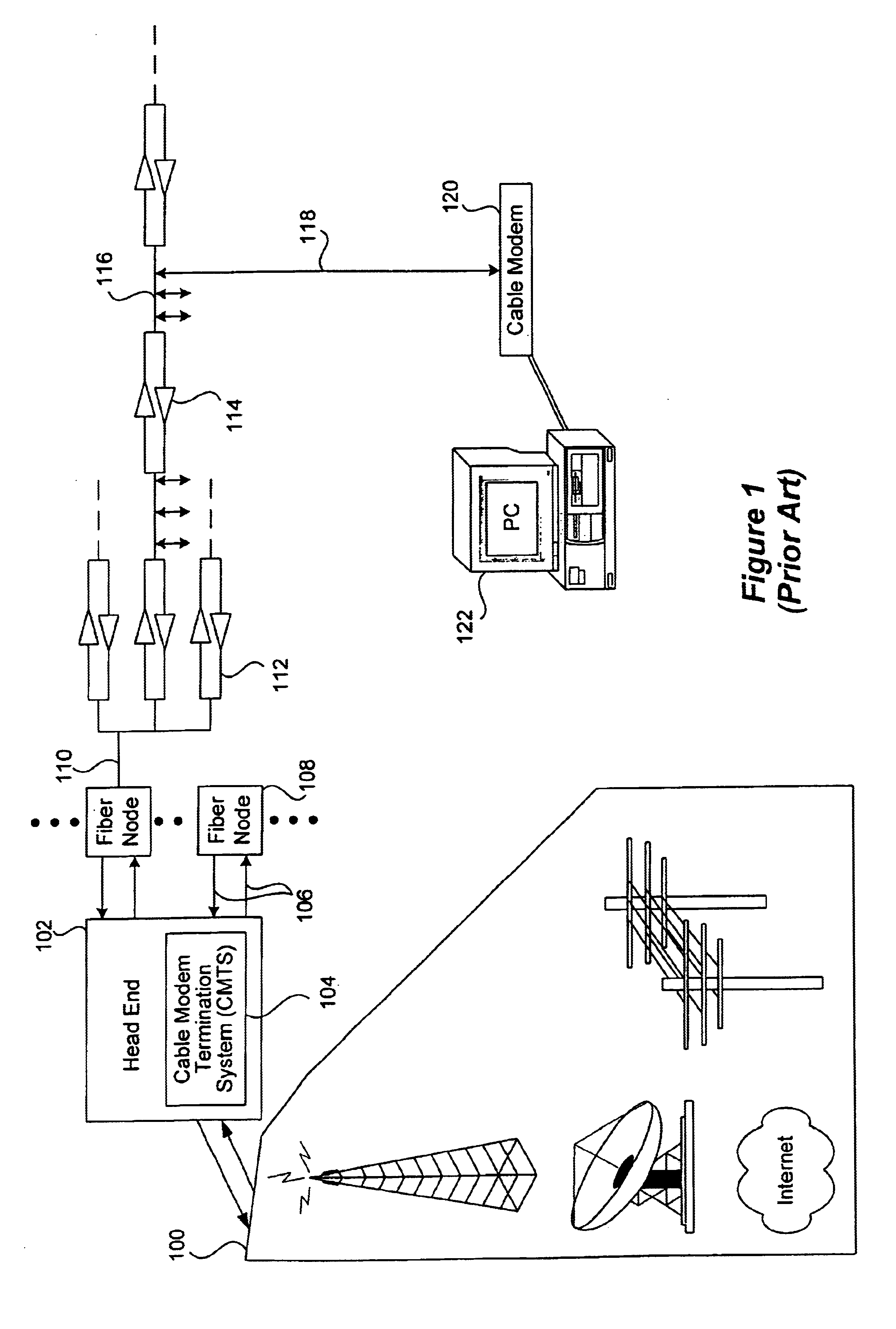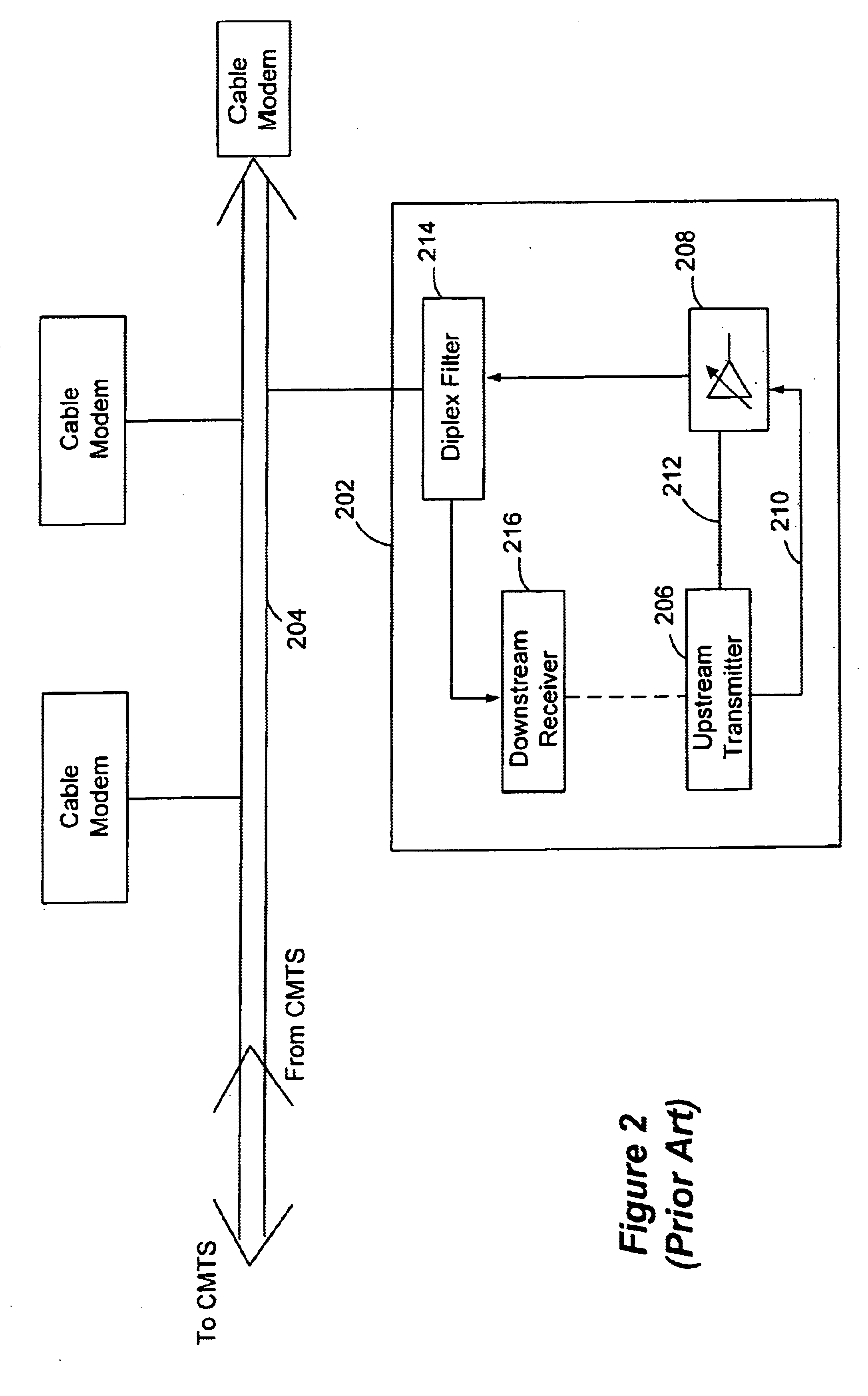Method and apparatus for reducing noise leakage from a cable modem
a cable modem and noise leakage technology, applied in the field of data transmission, can solve the problems of reducing the channel capacity of the cable system, degrading the signal quality, and not having the equipment installed for sending signals from subscribers, so as to reduce the noise leakage
- Summary
- Abstract
- Description
- Claims
- Application Information
AI Technical Summary
Benefits of technology
Problems solved by technology
Method used
Image
Examples
Embodiment Construction
[0037]Reference will now be made in detail to a preferred embodiment of the invention. An example of the preferred embodiment is illustrated in the accompanying drawings. While the invention will be described in conjunction with a preferred embodiment, it will be understood that it is not intended to limit the invention to one preferred embodiment. To the contrary, it is intended to cover alternatives, modifications, and equivalents as may be included within the spirit and scope of the invention as defined by the appended claims.
[0038]In accordance with one embodiment of the present invention, there is provided a device for reducing noise leakage from a cable modem when the cable modem is not actively transmitting and to properly terminate the cable plant when the cable modem is not in use, avoiding unwanted reflections, as described in the various figures. One way of reducing the accumulation of noise (i.e., prevent raising the noise floor) on the upstream channel for a group or sy...
PUM
 Login to View More
Login to View More Abstract
Description
Claims
Application Information
 Login to View More
Login to View More - R&D
- Intellectual Property
- Life Sciences
- Materials
- Tech Scout
- Unparalleled Data Quality
- Higher Quality Content
- 60% Fewer Hallucinations
Browse by: Latest US Patents, China's latest patents, Technical Efficacy Thesaurus, Application Domain, Technology Topic, Popular Technical Reports.
© 2025 PatSnap. All rights reserved.Legal|Privacy policy|Modern Slavery Act Transparency Statement|Sitemap|About US| Contact US: help@patsnap.com



